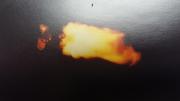
Originally Posted by
GJM

Similar to a red dot on a long gun, a slide mounted red dot on a service pistol offers a number of potential shooting advantages — an easily adjustable zero, low light capability, the ability to stay target focused, a usable aiming reference for mature eyes, and the ability to get full sighting information from a single dot as opposed to aligning and interpreting iron sights. There are two areas that many shooters transitioning to a red dot struggle with, slower speed on close targets and reliably/quickly finding the dot on the presentation. Here are some things to consider, that may help you improve in each of these area.
1) speed on close targets. With iron sights, depending upon target size and distance, we may use anything from just pointing the pistol, to indexing the slide, to a gross front sight, to a sharp front sight, and so on all the way through the continuum to a perfectly sharp front and rear sight with equal light and bars. Yet, when shooting close and gross targets with the red dot, the same shooter that might use far less than a sharp front and rear sight with equal light and bars to make the shot, insists on stopping the red dot and placing it on a precise spot on the target. If you understand that the red dot streaking anywhere within the target zone will result in an acceptable hit (assuming you press the trigger properly) you will get red dot speed on close targets equivalent or faster than with iron sights.
2) reliably acquiring the dot on presentation. With optimal iron sight presentations, your index will bring the iron sights onto the target, in alignment, and you will use vision just to confirm sight alignment, rather than look for sight alignment. Once you are on board with this philosophy, meaning your index gets the sights there, you can focus on what path your muzzle takes to the target. To steal something from TPC, when in doubt, act like a human. Try pointing at a spot on the wall with your finger and you will quickly see the natural path your body uses to point. Hint — this natural path does not look like a classic press out.
So, if you are presenting a red dot pistol with a classic press out, you are using your vision rather than your index to align your red dot. That is slower because it traces a circuitous route, and less reliable because you are not using your natural index you have spent your whole life developing each time you point at something. A good way to visualize an efficient draw path is to start with the pistol aligned in target and reverse the pistol all the way back into the holster. Using a direct presentation path, that aligns the pistol using index, with vision just used to confirm index, I have been able to frequently do a one shot red dot pistol draws to a seven yard target down into the .50’s from a Production rig type holster.
Hopefully these comments will give those struggling with red dot presentation speed and close shooting speed some things to consider.




 Reply With Quote
Reply With Quote

